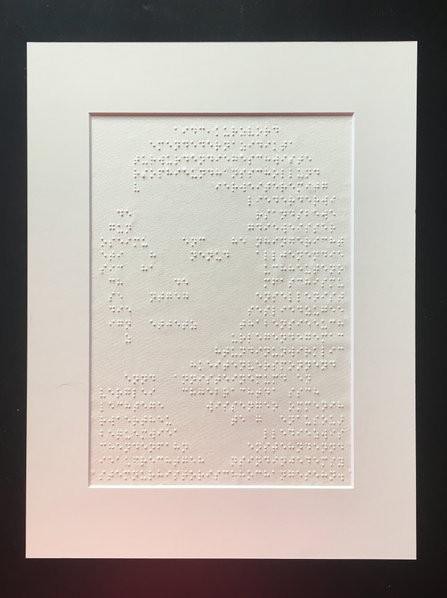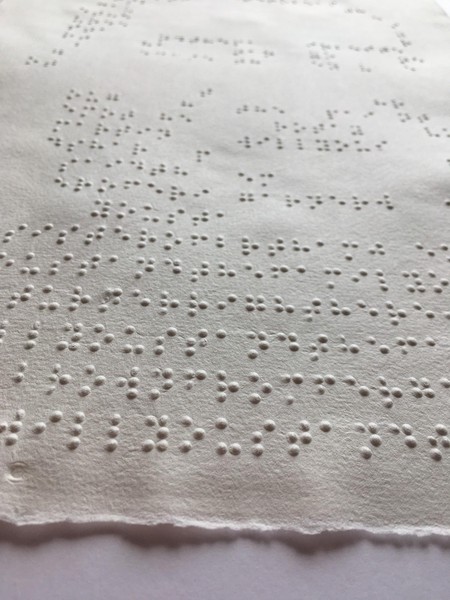Don't touch ...
Don’t touch… Sophie Scholl, 2020 Braille embossing, text: The White Rose
A large part of visual art can be appreciated exclusively or predominantly through “sight.” Even though major exhibition venues now offer opportunities for blind people to experience art, art itself—but also the way it is handled (“please do not touch”)—represents a barrier, even excluding the participation of the blind. The starting point for this consideration was Braille embossing, which originated as advanced written drawings in which texts became images. This is how the multi-part work “Don’t touch…” was initially created. These are embossed prints of portraits of historical figures, of which a specific, familiar image remains. The theoretical possibility of physically touching a face has been forever rendered impossible by death, thus precluding the blind person’s ability to participate in a collective visual perception that is natural to the sighted. The open presentation in the passepartout without glass invites a tactility that is atypical in art and reflects the ambiguous title back on the people depicted.

